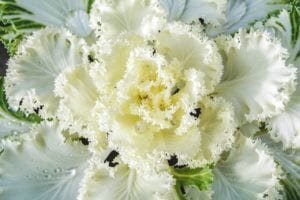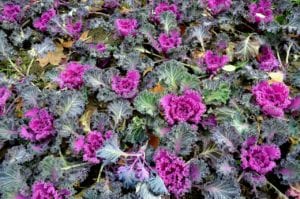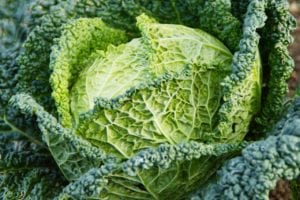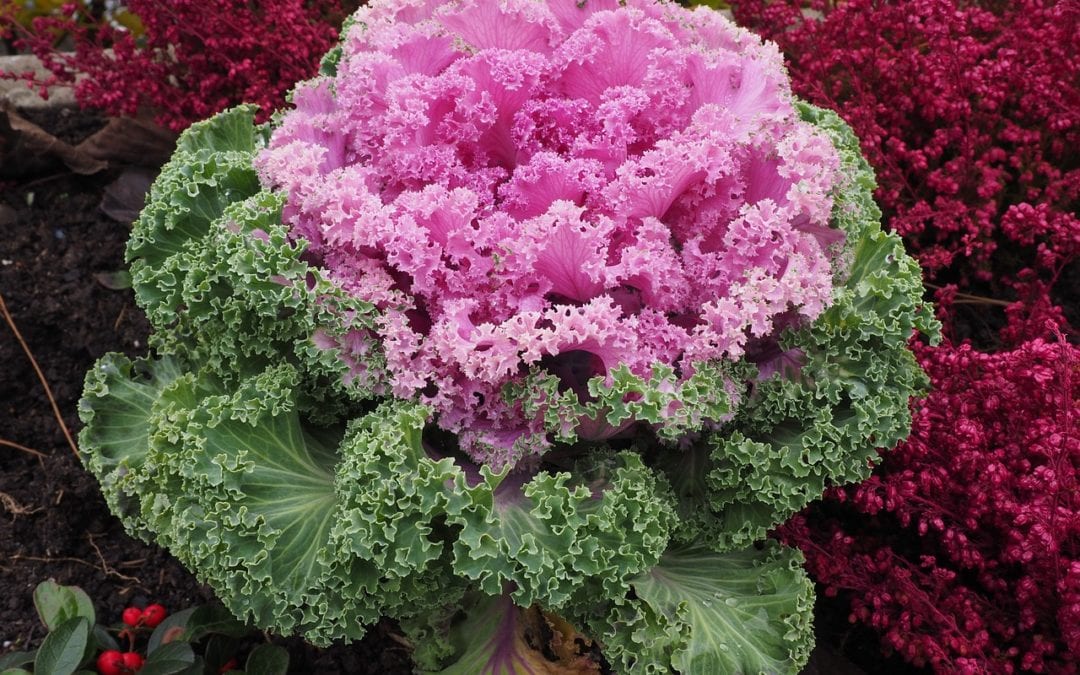Cabbage and kale in vegetable and ornamental gardens are highly sought after during the fall and winter seasons of San Antonio, Texas. Whether you desire to plant them for aesthetic purposes or to enjoy on your dinner table, cabbage and kale are winter hardy crops that San Antonians look forward to each year. Now that the warm weather looks like it will be taking a final lap and then head into cool weather next week, let’s look at a few of the ways you can enjoy cabbage and kale in your landscapes.


Ornamental Cabbage and Kale
Ornamental cabbage and kale grow about a foot wide and about 15 inches tall. Cabbage and kale make gorgeous additions to your fall botanical displays whether potted up with other fall annuals like pansies and snapdragons in a big whiskey barrel or other large pot, or nestled into garden beds to fill up space in between perennials. A neat, symmetrical pattern in garden beds can also look spectacular
We love ornamental cabbage and kale for their large rosettes of beautiful leaves that are variegated with colors of rose, purple, gray, white, cream, and green. This beautiful color only gets more vibrant as temperatures head into the 50’s and after a couple of frosts have hit. In our mild climate, ornamental cabbage and kale will usually provide great color well into spring before warm weather moves in to cause it to bolt (which actually adds some neat interest to the spring garden with the yellow flowers that are produced). Ornamental cabbage and kale also provide amazing, showy, texture with their interesting frilly foliage.
Ornamental cabbage and kale need to be planted in full sun. Planted in too much shade, cabbage and kale becomes leggy and honestly, not very attractive. Full sun plantings, in well-draining soil, are able to develop into the stunning specimens that they are meant to be. Bury the stems of ornamental cabbage and kale to where the lowest leaves are about flush with the soil. Keep well watered to get established. Fertilize with a high nitrogen fertilizer to keep plants growing vigorously.
Pest control is the same for ornamental varieties of cabbage and kale as is for edible varieties growing in your vegetable garden. See info below in our edible cabbage and kale section.


Edible Cabbage and Kale
Choose a sunny location (cabbage and kale can tolerate a little bit of shade, but too much makes it leggy). Plant edible cabbage and kale at the depth they are growing in their nursery pots, and give them about 24” of space between plants in the garden.
Plant your cabbage and kale in soil that has been enriched with organic matter (compost, peat moss). About 2 weeks after planting, when transplants are actively growing, feed with a high nitrogen fertilizer. Offer fertilizer again once you see cabbage heads developing. Mulching cabbage and kale will help to keep weeds at bay and keeps the soil an ideal cool temperature.
Protect the young plants of cabbage and kale transplants by creating a barrier against cutworms and cabbage loopers by using the cardboard from toilet paper rolls as cutworm collars. If you didn’t prevent cutworms proactively and you find them chewing on the leaves of your cabbage and kale and skeletonizing them, treat the cutworms with a full coverage spray of Bt (Bacillus thuringiensis). Make sure you spray the entire plant, topside and underside of leaves.
-Extra tip: For early pest detection, watch for small white butterflies around your cabbage and kale plants. They are the adult form of cabbage loopers and will lay eggs that will develop into the worms that will soon start eating your cabbage and kale plants.
While cabbage is a cold-hardy crop, it is still in your best interest to cover crops with winter protection when a hard freeze is predicted. A hard freeze could damage the growing plants, or make the mature heads burst. A light or moderate frost is ok and has actually proven to improve the flavor of kale by making it somewhat sweeter. Harvest your cabbage when the heads are nice and firm, but before they split or burst open. Harvest your kale from the outer, older leaves first, when they are about the size of your hand.
Hopefully the pictures and information in this blog will encourage you to try cabbage or kale or both in your garden in some capacity this fall and winter. We don’t think you will be disappointed.
~The Happy Gardener, Lisa Mulroy


Trackbacks/Pingbacks